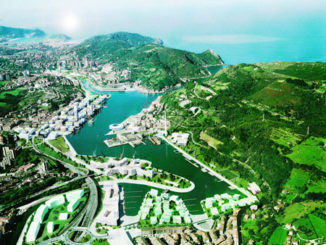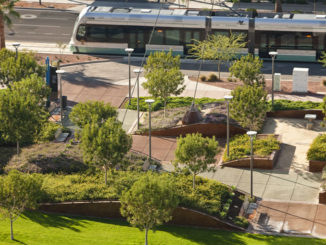The Shenzhen Longgang River Blueway project is a major municipal civil project that will protect and enhance 1,000 kilometres of waterways in the southern Chinese city of Shenzhen. Hassell was selected as the winner of the Water Authority of Shenzhen organized design competition, among a strong selection of international contenders. When completed, the project will connect the waterfront with the surrounding urban area and realize the vision of an integrated waterway, balancing an eco-environment, community needs and commercial drivers.
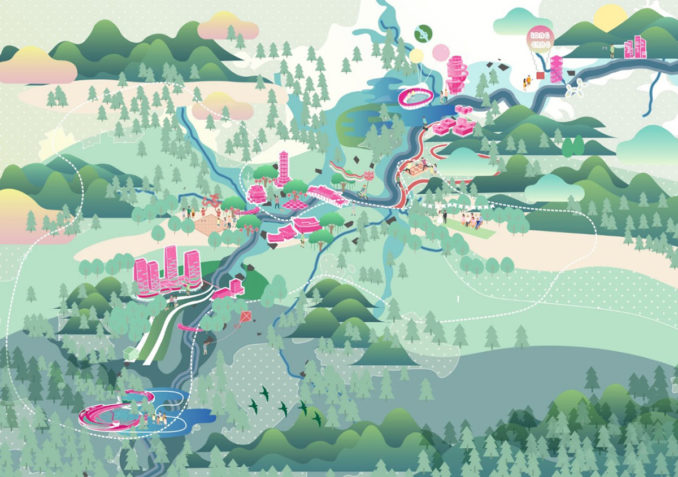
Longgang River is a freshwater river stemming from the north of Wutongshan Mountain running from the southwest to the northeast across the central area of Longgang. The river has witnessed both the positive and negative effects of development on both its banks. This particular 23.6km long section of the Longgang River meanders through innovative tech-centres, metropolitan areas, historical culture precincts and nature.

The project design brief called for three key challenges to be overcome – fluctuating water levels during different seasons, poor access to the waterfront, and varying, and at times competing, development projects along the waterfront. The final design proposition looks to recover and improve sediment-accumulated flood discharge in waterways, protect eco-fragile corridors, improve accessibility to the waterfront, establish better amenities to help people linger, and build stronger connections between the Longgang Blueway and adjacent urban developments.
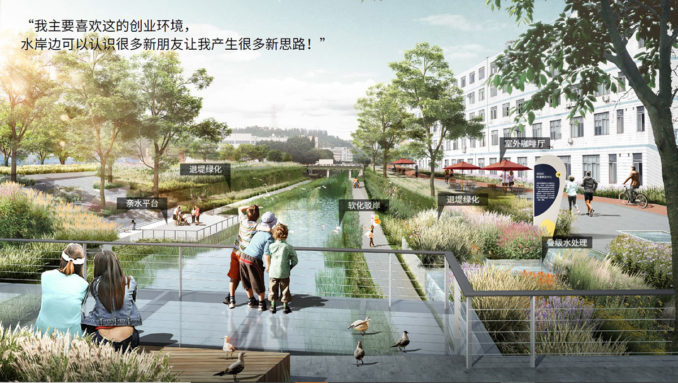
The Longgang River Blueway concept is framed by five pillars – water safety, water environment, water ecology, water landscape and industrial chain. The design also incorporates a smart decision-making management platform, called City Brain, which assists authorities in addressing the interaction between nature and the city, and their desire to achieve the right balance of functional and economic outcomes.
Promoting regional growth
Longgang River is the key eco-corridor for the entire watershed with limited ecological space for flora and fauna to live and thrive. The design approach integrates the waterways and the urban parklands as ‘green infrastructure’ eco-corridors that provide shelter for the flora and fauna of the river, and concurrently purifying the water discharged to the waterways.
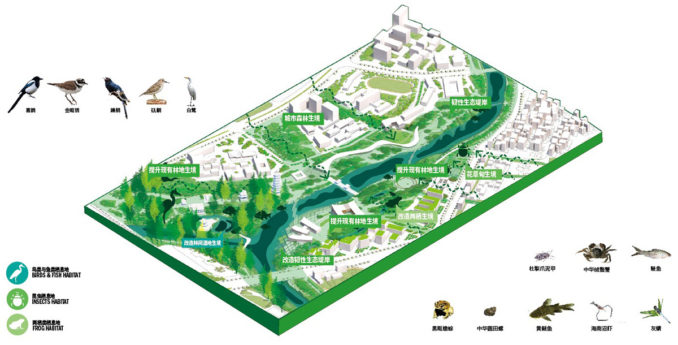
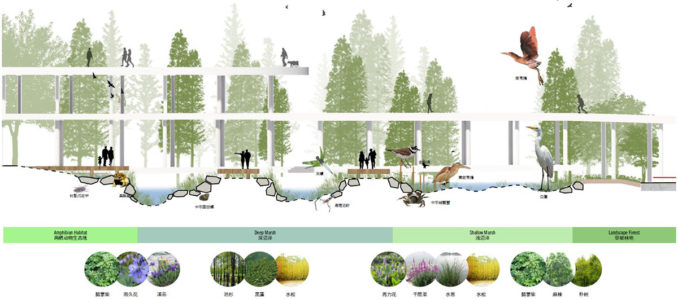
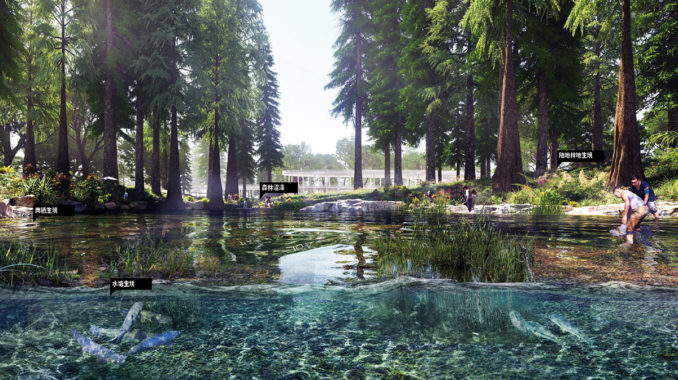
Increasing connections along the river
The design proposes for Longgang River Blueway includes a 60km pedestrian and community ‘slow track’ on both sides of the river to improve access and help create a tourism and recreation grid, connecting the city with the water and the adjacent urban areas. By expanding the water edge, the new pedestrian network helps achieve the community-desired need for increased leisure, destination and fitness facilities.
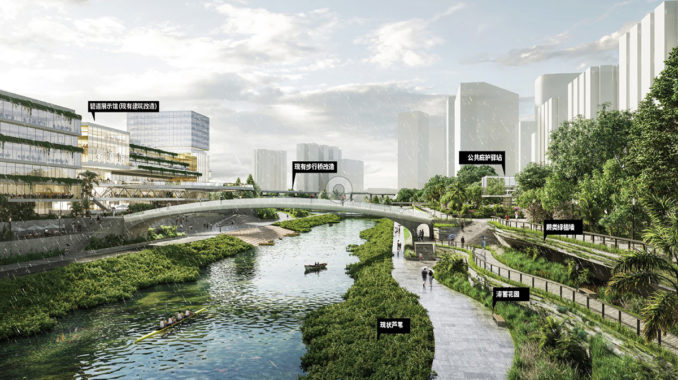
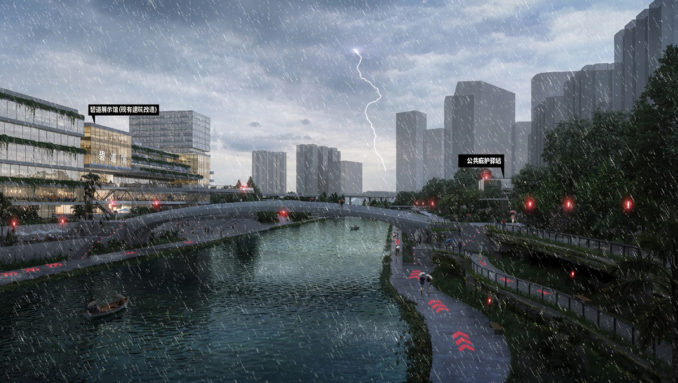
A destination for the next generation
The design not only restores the eco-system and improves the quality of the landscape and river edge public realm, it also reimagines the waterfront as a centre for city and community development, and at the same time, creates cultural and recreational destinations that respect and recognize the southern Chinese Hakka cultural heritage.
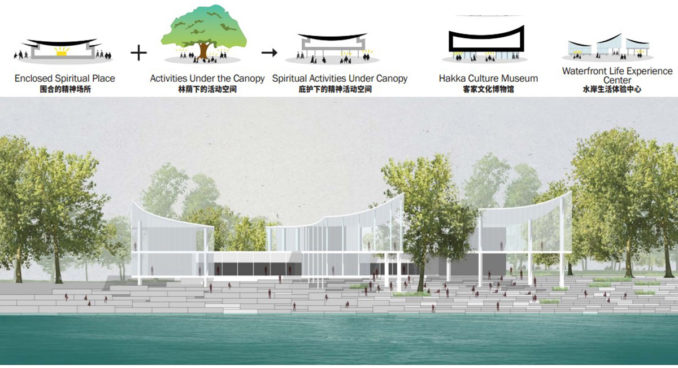
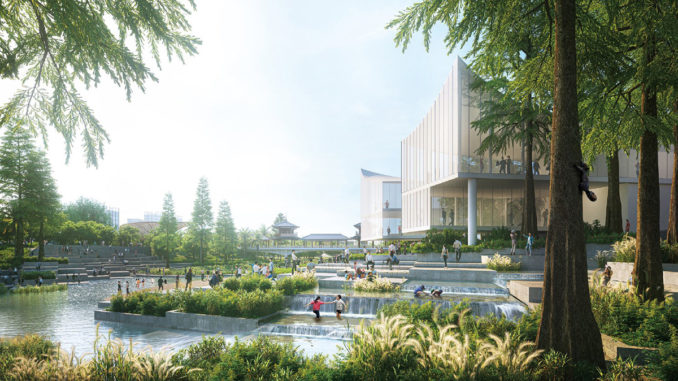
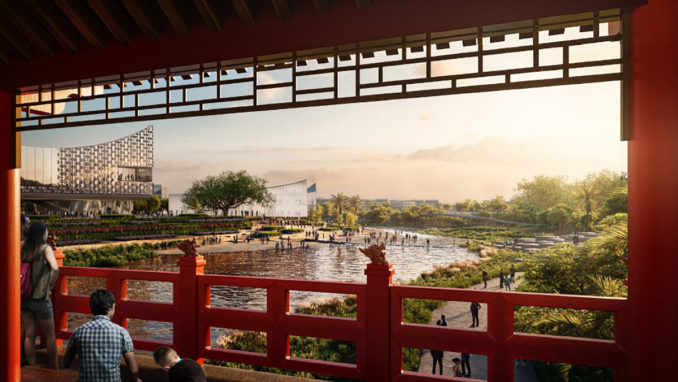
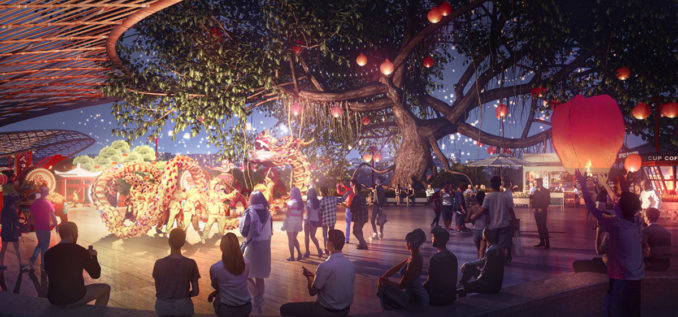
Longgang River Blueway
Location: Shenzhen, China
Design Firm: Hassell
Collaborators: UPDIS and E2DesignLab
Image Credits: Hassell


